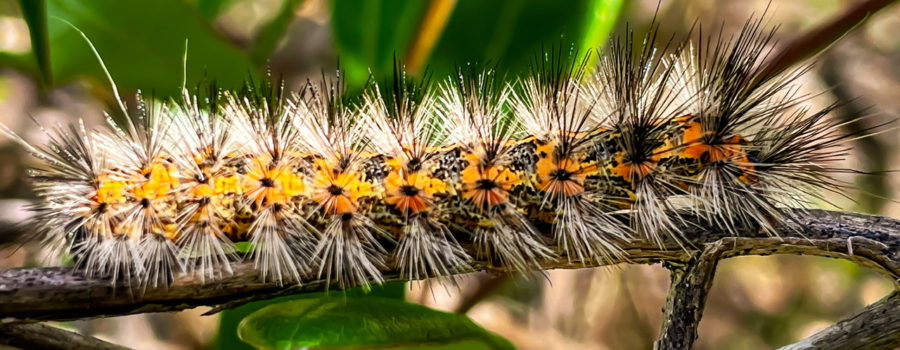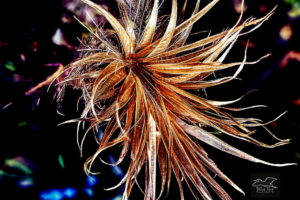The Salt Marsh Caterpillar Come in Various Interesting Colors

This week has been very windy here in north central Florida, which can make photographing things like wildflowers difficult. Earlier this week we had an afternoon when it wasn’t raining (it’s been a wet spring so far, too) and the wind wasn’t bad, so I ventured out with my camera to see what Mother Nature had going on. I was specifically hoping to find some insects and some pretty (and hopefully new to me) wildflowers. I’m not sure that I have ever gone out and been totally disappointed, and that afternoon was no different. I wandered into a clearing that has several coral honeysuckle bushes growing around the edges, and in them I found these cool, fuzzy caterpillars (and some other insects for later posts, too). I honestly thought they were something new, but it turned out that they were salt marsh moth caterpillars (Estigmene acrea), which I have seen before in the fall on my passion fruit vines. These caterpillars are also often called salt marsh caterpillars and acrea moth caterpillars.

It turns out that salt marsh caterpillars can have a variety of colors, and that their color changes as they mature, which helps to explain my confusion. When first hatched, these little caterpillars tend to be greenish or brownish in color. As they mature they tend to darken. Depending on where they are living, these caterpillars go through five to seven instars. In the second instar, they tend to develop longitudinal, colored stripes of brown, yellow, and white. In the third instar they tend to darken, but they may be found in a variety of colors ranging from cream colored to dark brown. In the fourth and fifth (and subsequent instars in areas where those occur) the color tends to stay about the same, but they grow larger. The thing that is consistent throughout all the stages of growth are the long, fuzzy hairs.

Salt marsh moths are closely related to tiger moths and giant leopard moths, which are well known for their large, fuzzy caterpillars that are often referred to as woolly bears. It’s not surprising, knowing that, to realize that these salt marsh caterpillars look a lot like smaller woolly bears. Spiky or hairy caterpillars should always be handled with caution, especially if you are unsure of the species. Some of them, like the fir tussock moth caterpillars can cause serious skin irritation and pain. Wooly bears and salt marsh caterpillars don’t tend to do this, but some people with sensitive skin can react to their long, bristly hair by getting skin rashes and severe anaphylactic reactions can even occur rarely. I try not to touch or disturb my subjects when I’m photographing them anyhow, but I am always especially careful with fuzzy caterpillars!

The caterpillars that I observed this week were for the most part pretty still. I’m not sure if they were getting close to entering their cocoon state or just already full by late afternoon. I did find one individual, though, that was pretty active, and I really enjoyed watching him/her rush around on the branches and leaves of the bush. It was surprisingly agile and made a few pretty acrobatic moves, especially when passing from one leaf or branch to another. I probably should have shot some video and didn’t think of it (darn it), but I think you can get an idea from these stills how athletic these caterpillars can be. I hope you enjoy them as much as I did when shooting them.






Recent Comments